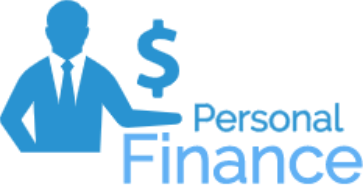As you become more and more mature in your financial position, you’ll increasingly want to diversify your accounts. When you’re first starting your financial journey, it’s fine to just have one checking account, but the more money that you start accumulating, the more you will want to start holding it in different types of accounts. IRAs, 529s, Roths, 401ks, checking, savings — these are all different types of accounts and they all serve different purposes.
Knowing where to put your money and how much should go in each type of account is a bit of a matter of personal preference. It will depend on your own unique situation, including your age, number of kids, family status, and how close you are to retirement. In this article, we’ll talk a little bit about how to best use a high-yield savings account.
What is a high-yield savings account?
Most people are familiar with the basic concepts of a checking account and a savings account. A high-yield savings account is not actually different from a regular savings account — it’s simply a designation indicating that it is paying a “high” amount of interest. There is no official designation of how much interest a savings account needs to pay out in order to be considered “high-yield”.
The interest that any savings account pays out varies mostly with macroeconomic conditions like the federal reserve interest rate. The Fed interest rate has a direct impact on the amount of interest that companies pay out. Another term that is similar to a high-yield savings account is a money market account. You can compare a money market account with a high-yield savings account here.
What kind of money should you put in a high-yield savings account?
Now that you know a bit about what a high-yield savings account is, it’s time to talk about how much money (and what kind of money) you should keep there. We’ve written before about how much money you should keep in your checking account, and a good rule of thumb is not very much. You should keep only enough to pay your regular monthly bills, with a little bit extra to avoid overdraft fees (Mint can help with this).
The reason for this is that most checking accounts pay hardly any interest at all. So excess money that you want to keep liquid is a good candidate for a high-yield savings account.
One type of account that fits very well in a high-yield savings account is your emergency fund. You want to keep your emergency fund in a separate account from where you pay most of your bills (typically a checking account). And putting that money into something that at least earns a decent amount of interest is a smart financial move.
Watching out for inflation
The other thing that you want to watch out for is to not put TOO much money into a savings account. While it might sound nice to be earning 0.5% or 1% or 2% on your money, you have to take into account inflation. If you earn 1% on your money but inflation causes your cost of living to go up 2%, then you’ve actually had a reduction of 1% in your actual purchasing power.
So while it’s a good idea to keep some money in an emergency fund that is easy to access in case of an emergency, you don’t want to keep too much in there. $1000 is a good place to start for an emergency fund, but you’ll want to gradually increase that to a couple of months’ worth of expenses if you can. Any more than that should be invested in assets like the stock market that have inflation-beating returns.
Where to find a good savings account?
If you’re looking for where you can find a good high-yield savings account, you can check out our curated lists of the best checking account offers and the best savings accounts.
One thing that’s important to realize is that in a time of fairly low-interest rates, the actual differences between two different rates are minuscule. If you have $2,000 invested in a high-yield savings account, the difference between a bank paying 0.5% and one paying 0.75% is only five dollars. So if there are other (non-financial) reasons for choosing one bank over another, keep that in mind.
You might also look at bank account signup bonuses. Many banks and credit unions give a bonus for signing up for a new account. Like credit card signup bonuses, banks do this in hopes of keeping you as a long-term customer. Getting $150 or $250 from signing up for a new account can dwarf the actual interest received from keeping your money in the bank. Just make sure to read the fine print, terms, and conditions of the offer to make sure that you earn your bonus.


